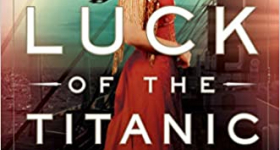Amid the less-traveled green expanses of North Carolina, at the crossing of Stanton Hill and Red Hill Roads, lies an outcropping of abandoned tobacco barns that have become a tourist stop in the rural community of Cameron, NC, population 300. Since 1999, the Barnstormers collective has road-tripped down to the area to paint and repaint some 75 murals on the facades of these barns. The New York-Tokyo-based collective, loosely orchestrated by Brooklyn artist David EINs, has developed its own following on both sides of the Pacific and is known for its collaborative, improvisational style.
Barnstormer and Dyezu gallery owner Naomi Kazama provided a connection and home base in Japan for the crew. The gallery gave its last show in 2007, and the building was torn down. The self-published book Vonazine Vol. 1, released this spring, encapsulates the open feeling of the experimental space that had been a second home to the members-complete with skate ramp-and features the artists who created there.
Dyezu and the collaborative art projects also cultivated the artists's parallel solo careers, emerging as important artists in their own right. Cross-influences range from graffiti and calligraphic forms to sumi inks. Featured here is a selection of Asian American members of the crew: Kenji Hirata, Rostarr, Che Jen, and Mike Ming.
KENJI HIRATA
Brooklyn-based Kenji Hirata sees art as a spark of connection between people. Hirata's works explore the relationship of music and visual art-making, and they often carry the names of instruments.
The artist also plays with the pairings and placement of simple colors and shapes. The organic, yet highly futuristic and multicolored curved shapes of his paintings, such as Cobra's Left Hand and Do Re Mi, are meant to represent a person's touch or what the artist imagines might be the shape of a caress.
ROSTARR
Culling influences from abstract expressionism to M.C. Escher's repetitive visual play, from corporate logos to calligraphy, Rostarr (Romon Kimin Yang) alternates clean line patterns with violent color splashes, creating works with a bold hand. Trained as a designer, Yang shifts between digital design tools, rendering perfect Technicolor lines and flat colors, and highly palpable mediums: paper, canvas, splashed and brushed paint, and the skipping straight lines of sumi ink drawn by stiff bamboo brushes.
Not one to shy away from political themes, Siamese Antichrist is a biting yet humorous supposedly fictional portrait of a "character that was born from an oil tycoon to become the nation's dictator."
Rostarr in collaboration with Doze Green Installation view of the War Pen exhibition at Leonard Street Gallery, 2008.
CHE JEN
Sumi ink strokes in the shape of fire, feathers, fur and fantastical creatures curl and ripple across the page. Che Jen's undulating ink emulsions-seen in her work Embers-grow on the page as if set alight in one corner, rising and consuming.
Balancing elements of elegance and anima in pieces such as RE, the movement of the strokes shape what might be a lilting being, rhyming with the curve of a human spine or serpentine body of a dragon. Through references of culturally significant and iconic symbols and mediums such as dragons, fire and ink, Jen explores the ongoing continuum of cultural history, and what lies beneath the consciousness of daily existence.
MIKE MING
Mike Miyahira, a k a Mike Ming, gives reverence to his passion for surfing and the sea with drips and flows of inks and brilliant paints squeezed directly from the tube, resembling undulating waves and algal shapes.
Finding his own sense of style and technical range through skateboarding and surfing opened up a self-awareness of his creative potential, which translated to his artmaking. "I can see what others can do," Ming says, "but I can only do what I can do. How do I expand that vocabulary?"
His improvisational mural pieces, such as his live painting at the Osaka Green Room Festival, underline this self-awareness and risk-taking-knowing the limitations for the work he undertakes, and how he can push himself beyond them.
Alexandra Chang is an arts writer living in New York City. She is the author of Envisioning Diaspora, due out in September.
For the past seven years, independent curator ALEXANDRA CHANG has immersed herself in Asian American art, from writing for Art in Asia and Artkrush to serving as managing editor of Art Asia Pacific and co-founding the Dream So Much artist collective with her brother Richard. So Chang, who curated the Artwell, knows of what she speaks when she says, "For sure, the Barnstormers crew is definitely one of the most talented artist collectives out there." The New York resident says her most memorable road trip was zooming through the redwoods in a Porsche to Monterey, CA, to pay homage to Steinbeck's Cannery Row.









Comments